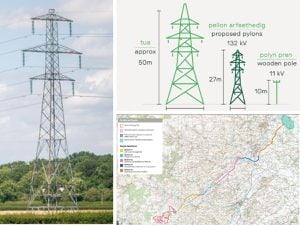Benefits of reforesting Shropshire uplands explored
The usual talk about reforesting the uplands to reduce the effects of flooding in the lower catchments, seems to ebb and flow every year without too much being done about it once the flooding recedes.
We have begun to see some action after one of the wettest winters on record. Dredging alone can only offer a temporary solution over the long-term. Some trees, especially alder, willow and poplar act like a sponge as they naturally transpire water.
The "rewilding" approach to flood management relies on making changes to the way the landscape is managed. This involves a range of measures, including constructing low-level bunds to create additional flood storage capacity; planting more trees, especially along stream-sides and in the floodplain to form a barrier to slow the passage of the flood peak; and restoring woody debris dams in small streams and wetlands, in order to raise water levels and reconnect streams with the floodplain.
There are two projects actively following this approach which may point the way for managing other catchments, including the Severn. These are "Slowing the flow" at Pickering in Yorkshire and the "Lazy River/Nar" project in Norfolk protecting the village of Litcham. The aim of the Pickering project is to slow down water in the upper catchment, store more in the middle section and improve its conveyance through the town of Pickering. A total of 100 large woody debris dams will be artificially constructed to a proven design in the Pickering Beck catchment (apparently 50 dams are planned for the headwaters of the River Severn).
The experimental Norfolk scheme redirects rivers into their original meandering pattern. Trees have been felled into the stream and when rain falls heavily the river floods and water soaks into the soil. WWF reports the speed of water flowing through the River Nar had fallen noticeably. "Lazy rivers" do not have the energy to carry much silt, either, and this should reduce the need for dredging downstream.
Special ponds have also been created to catch much of the fertile silt running off fields and keep it for local farmers to spread on their land. WWF claims that the 800 acres under the Norfolk scheme held back 157 million litres of water in 2013. The problem for farmers appears to be red-tape. Grants for water storage are much harder to obtain.
There are other benefits for reforesting parts of the uplands too. A new report suggests Scotland's traditional hill farmers would benefit from switching from sheep to growing trees.
Productive conifer forests can produce three times the income provided by upland sheep farms, which only survive because they soak up six times the public subsidy required by woodlands. Based on a study of 50,000 acres of forest in southern Scotland, established, productive conifer forests deliver more than three times the economic output compared to upland sheep farming before subsidy: an average of just over £10 million per year when in sustained production, compared to just over £3 million for farming.
It would be interesting to see how these figures match up with the situation in Wales and the Marches.
Martin B Jones is a chartered forester and is managing director of The Woodland Stewardship Company based in Shrewsbury





